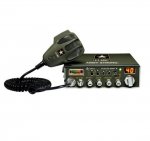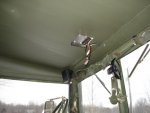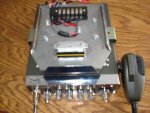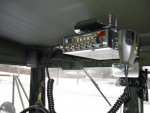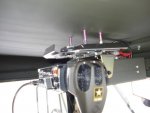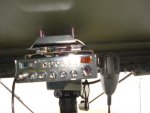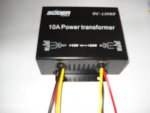ONTOS66
Member
- 433
- 3
- 18
- Location
- Franklin, NJ
Radio monitoring, be it military, or regular SWL (short wave listening) is kind of like selling real estate: Location, Location, Location.
When dealing with tactical FM transmissions (or the local emergency services, or what ever floats your boat) the radios are "low power" for local use. The military does not want their signal going any further than needed for several reasons - interception by the "other side" and interference with other units being two of them.
Of course there are strange things that can occur, such as "skip" which occurs from time to time and can permit longer distances than normal. As an example: years ago I was at Fort Drum, NY operating a night tank range. Using the range control frequency for Ft. Drum one of my RTOs was conducting a periodic check and found himself talking to 2 other range controls, one in Virginia and the other in Pennsylvania. That surprised all 4 units (me and the 3 range controls). Fortunately it was of short duration and things went back to normal within an hour or so. S**t happens in the field.
Antennas - yours and theirs also play a part. Mobile antennas are not as effective as fixed stations for a bunch of reasons.
tennmogger mentioned HF. A whole nother ball game. HF (high frequency) radios are used by the military (and others) to communicate overr longer distances. Military HF gear will generally be more expensive than the more common tactical FM gear.
When I was the Operations Sergeant Major for a tank battalion I used a portable civilian scanner to monitor multiple frequencies when we were in the field. With the scanner I could listen to the Brigade Operations Net as well as my Battalion Operations Net plus the Bn Admin Log net and each of the tank company nets, plus the scout and mortar platoons as needed. Or when we had tank ranges in operation I could monitor the frequencies of several ranges as well as range control, etc. It all depends on what you need to accomplish.
Having said all that we won't even go in to radio wave propagation and other technical stuff. Again, check ARRL and other sites dealing with radio listening for more details.
So, it really depends on what YOU want to do. There is no single correct answer nor perfect solution. Sort of like life.
Good luck with your project.
When dealing with tactical FM transmissions (or the local emergency services, or what ever floats your boat) the radios are "low power" for local use. The military does not want their signal going any further than needed for several reasons - interception by the "other side" and interference with other units being two of them.
Of course there are strange things that can occur, such as "skip" which occurs from time to time and can permit longer distances than normal. As an example: years ago I was at Fort Drum, NY operating a night tank range. Using the range control frequency for Ft. Drum one of my RTOs was conducting a periodic check and found himself talking to 2 other range controls, one in Virginia and the other in Pennsylvania. That surprised all 4 units (me and the 3 range controls). Fortunately it was of short duration and things went back to normal within an hour or so. S**t happens in the field.
Antennas - yours and theirs also play a part. Mobile antennas are not as effective as fixed stations for a bunch of reasons.
tennmogger mentioned HF. A whole nother ball game. HF (high frequency) radios are used by the military (and others) to communicate overr longer distances. Military HF gear will generally be more expensive than the more common tactical FM gear.
When I was the Operations Sergeant Major for a tank battalion I used a portable civilian scanner to monitor multiple frequencies when we were in the field. With the scanner I could listen to the Brigade Operations Net as well as my Battalion Operations Net plus the Bn Admin Log net and each of the tank company nets, plus the scout and mortar platoons as needed. Or when we had tank ranges in operation I could monitor the frequencies of several ranges as well as range control, etc. It all depends on what you need to accomplish.
Having said all that we won't even go in to radio wave propagation and other technical stuff. Again, check ARRL and other sites dealing with radio listening for more details.
So, it really depends on what YOU want to do. There is no single correct answer nor perfect solution. Sort of like life.
Good luck with your project.



